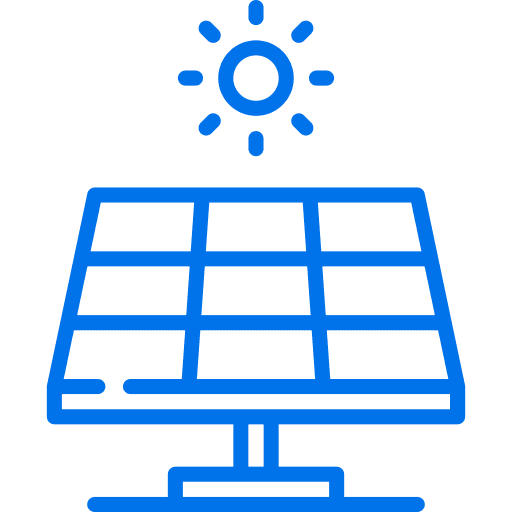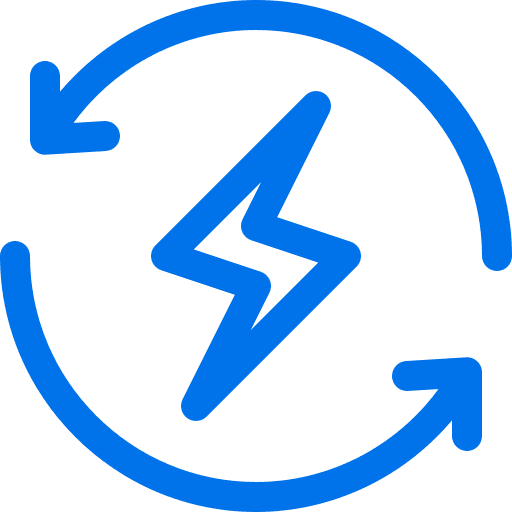-
- Turn your unused solar energy into rebates. Feed-in tariffs let you convert excess energy into a credit on your bill.
- Encourage environment-friendly energy. Feed-in tariffs are a decent incentive to make eco-friendly solar generation more cost-effective.
- High-export houses can benefit. If your house runs on mostly solar power already and you have some to spare for export, getting a high tariff has no downsides.
-
- Feed-in tariffs are much lower than usage rates. You save far more money by using your solar power and not buying grid power rather than exporting it.
- High feed-in tariffs mean higher usage rates. Plans that boost your export price almost always make it pricier to buy power from the grid too.
- Strict eligibility requirements. Retailers often limit their highest rate to the following:
- ◦ Customers with solar systems under a certain size (usually ~10kW)
- ◦ The first few kWh exported per day (typically ≤5kWh)
- ◦ The first 6–12 months of your plan
- ◦ Customers who purchased their solar system through the retailer
How do I find the best solar electricity plan?
Solar owners need to take into account a few factors when choosing a solar plan for their home.

Compare
Shopping around is key to getting yourself the best energy deal for solar. Compare plans available in your area before committing to one.

Estimate your total power bill
Input your energy usage (check your most recent bill) to get the most accurate cost estimate for your household.

Solar export and feed-in tariffs
How much will you be exporting back to the grid? Sustainability Victoria says that most solar systems export 50–70% of their power. If you opt for a provider with a low feed-in tariff (FiT), your power bill credits will also be small.

Check kWh prices
Opting for the highest FiT isn't always beneficial. Some electricity plans offer a very high FiT but only to a limited amount of kilowatt-hours (kWh). Others may offer a decent FiT but a high kWh price at night. In some instances, electricity plans made specifically for solar owners have a different pricing altogether and include a higher daily fixed charge.

Benefit period and discount conditions
Make sure to read the fine print before choosing an electricity plan. Some plans may have restrictions on the size of an eligible system. There could also be export limits or declining FiT after your benefit period has expired.
Which provider in Australia offers the best solar feed-in tariffs?
Our table lists the highest feed-in tarrifs available in each state. For most states you'll notice we've included 2 options.
| Solar plan | |||
|---|---|---|---|
| ENGIE - ENGIE Solar Elec |
VIC
|
Current FIT policy: 11 cents/kWh exported 11 c/kWh for the first 8 kWh, 0.04 c/kWh for every additional kWh Current FIT policy: 0.04 cents/kWh exported 11 c/kWh for the first 8 kWh, 0.04 c/kWh for every additional kWh |
|
| Alinta Energy - SolarBalance On |
NSW
|
Solar Bonus FiT: 10 cents/kWh exported Solar Balance FiT Single Rate Solar FiT: 5 cents/kWh exported Retailer FiT (ex GST) |
|
| AGL - Residential Solar Savers |
QLD
|
For the first 10kwh: 8 cents/kWh exported AGL Retailer Feed-in Tariff for the first 10kWh per day ( For the first 10kwh: 3 cents/kWh exported AGL Retailer Feed-in Tariff Thereafter (>10kWh per day) |
|
| EnergyAustralia - Solar Max |
SA
|
Solar Max Superior Feed-in-Tariff: 8 cents/kWh exported EnergyAustralia Retailer Feed-in-Tariff for the first 10kWh per day (excl. GST if any) Retailer Feed-in-Tariff: 3 cents/kWh exported EnergyAustralia Retailer Feed-in-Tariff thereafter (excl. GST if any) |
|
| Origin Energy - Solar Boost |
ACT
|
Solar FIT: 10 cents/kWh exported Origin offers 10 cents per kWh until a daily export limit of 8 kWh is reached. The daily export limit is averaged across your billing period (calculated by multiplying the number of days in your billing period by your daily export limit of 8 kWh). Solar FIT: 5 cents/kWh exported For any amount above the daily export, you will receive our standard retailer feed-in tariff of 5 cents per KWh |
|

"Solar power is more popular than it's ever been in Australia. But because of this, tariffs from the power companies aren't necessarily what they used to be. So before you automatically opt for a feed-in tariff, make sure you check whether you'd be better off on your bill using it yourself, or storing it."
That's because energy consumption habits vary by household. You might benefit from a flat FiT that's not the highest around but still good. Or you may prefer the highest FiT for a certain amount per day followed by a lower FiT per kWh for the remainder of the day.
High solar feed-in tariffs vs usage rates: Which is better?
Higher feed-in tariffs can look attractive on paper but most plans with higher FiTs likely have a more costly usage rate. This means you'll end up paying more to buy additional energy from the grid if you ever need to.
To find the best feed-in tariff for your home, you need to consider the following:
- How much grid energy you use per day. The more power you pay for, the more important it is to have a low usage rate.
- How much solar you export. If you don't buy much power but export heaps to the grid, a high FiT could drive down your bill.
If you're worried that feed-in tariffs won't really cover your costs, consider investing in a solar battery to reduce your reliance on grid power. These extend the time it takes for your solar system to pay itself off but can be an excellent long-term investment.
Good to know. FiTs are less important than they used to be. Back in the day, you would be paid up to 60c/kWh for each bit of energy exported. These days, you'll be lucky to get paid more than 10c/kWh in most states.
Why compare energy with Finder?

We know our stuff. Our experts review hundreds of plans each month. It's hard work, but we love it.
You can rely on us. We update plan data on dozens of providers daily, and we're constantly fact-checking.
We're here to help. We've helped millions of Aussies find cheaper energy. That's pretty powerful.
Learn more about energy
Our energy guides can help you compare and understand what plan is best for you.
Best energy plans: 5 plans selected by our experts, assessed and updated regularly
Cheap energy plans: Find the cheapest energy plans available this month
Solar power plans: Got rooftop solar? Compare your options and save even more
Average energy bill: Find out how your energy bill compares to the rest of Australia
Frequently asked questions
Sources
More resources on Finder
Read more on Energy
-
Solar power payback calculator
Read about how long it took couples from Sydney, Melbourne and Perth to start saving money on their solar power investment.
-
Solar battery and energy storage comparison
A home battery can help you do away with your reliance on getting power from the grid, and it can also lead to long-term savings.
-
Solar power options: going on-grid or off-grid
Terms like on-grid, off-grid and grid-tied can lead to confusion. They essentially refer to whether or not you want to access the grid alongside your solar power service.
-
What is net metering?
Net metering lets you make the most of your solar energy system if it produces surplus power.
-
Do I need a building permit to install solar?
A finder.com.au guide to solar panels and building permits and regulations.
-
What solar rebates are available to me in Australia?
State-based rebates and incentives can help you with the hefty upfront costs of installing solar.

